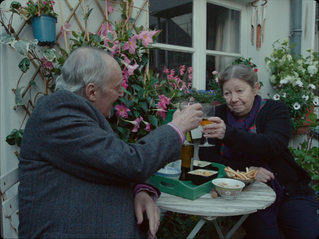A cocktail of confection: What a Way to Go!
- Jessica Moore

- Dec 31, 2020
- 2 min read

1964 saw Susan Sontag define camp in her seminal Notes on Camp, a cultural manifesto — addressed to Oscar Wilde — that aimed to specify the ambiguous descriptor by example. Sontag’s camp sees objects in quotation marks, it revels in the traffic between seriousness and tenderness. True camp is earnest, distinct from poor taste or artifice. The same year saw the release of What a Way to Go!, J.Lee Thompson’s cocktail of marriage, greed, and corruption, fronted by Shirley MacLaine and her four husbands: Dean Martin, Dick Van Dyke, Paul Newman (!), and Gene Kelly (!!). Like all camp cinema, one could analyse each frame film in isolation and be able to extract contradicting tastes and munificent references. In What a Way to Go!, one could write a thesis on Edith Head’s costume design alone — the costuming for MacLaine amounted to a staggering $500,000, worth $4 million today.
It appears wherever Louisa turns, she wanders into another marriage, and another hungry exhibition of ‘playing a part’. She adapts to each role, the wealthy lay-about, Thoreau-esque minimalism, the artist’s wife. For all, and most especially for Paul Newman, her body is a canvas. Clothing becomes her most legible aspect; her identity weighted in barely-there slip dresses and bikinis, structured gowns, and swathes of silks and furs.

One notable costume is the faux chinchilla floor-length coat, dyed cotton-candy pink to match MacLaine's coiffure of the same shade. Though costuming does, prior to this scene, atone Louisa’s fluid marital identity in its bold camp and disparate references of femininity, this pink spectacle stands for the opposite. Its monochrome is an identity prolapse, a manifestation of her then-husband, Pinky (Gene Kelly), and his all-pink brand. Once a catwalk of unpredictable, fantastical costuming, Louisa’s sartorial expression amounts to one static extreme; deliberately, she becomes Pinky’s ornament — in true camp, not a woman, but a “woman”.
Visual comedy outbalances each moment which could otherwise be taken as anti-capitalist. The film’s analeptic structure lends itself to this, shaping the narrative into a frothy, didactic farce that warns against insatiable men and their abject individualism. What a Way to Go! bathes in criticism towards materiality and postmodernity but never takes itself quite so seriously; in the words of Christopher Isherwood, one of the only predecessors to Sontag’s definition of camp, “you're not making fun of it, you're making fun out of it”. The result is a haptic dress-up box of lamp-shade gowns, pills, fascinators, PVC, a Champagne coupe-shaped bed, pogo-sticks and a chimpanzee artist. The film’s formal bedlam, its foray into the chasms of film history — Murnau, Godard — certify its vision to create something thoroughly confected, a blueprint of its own.








Comments